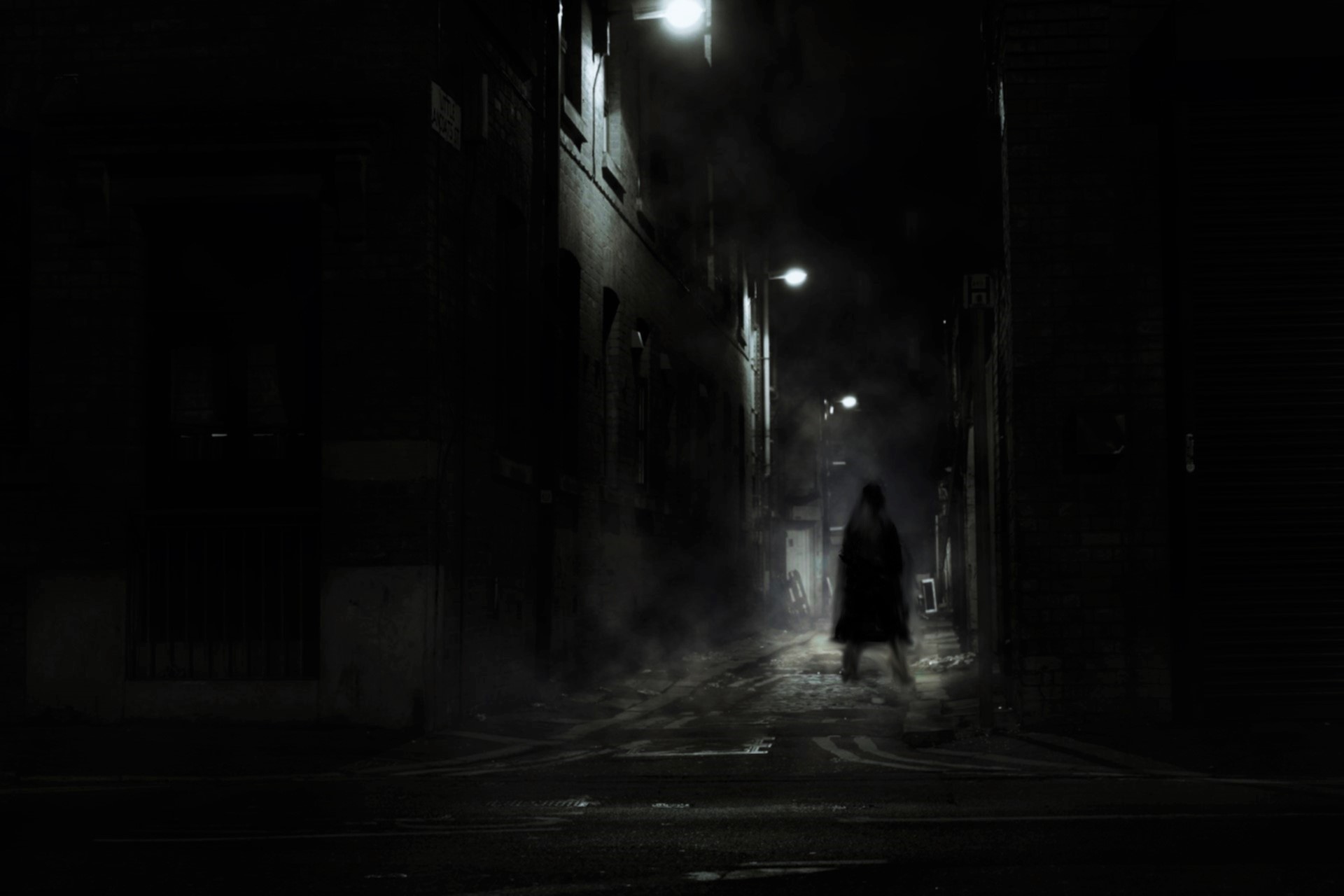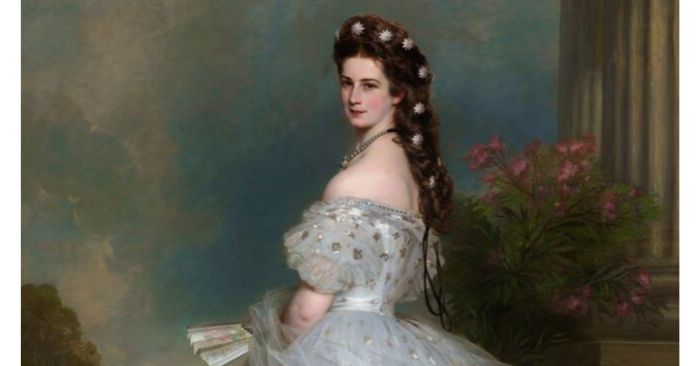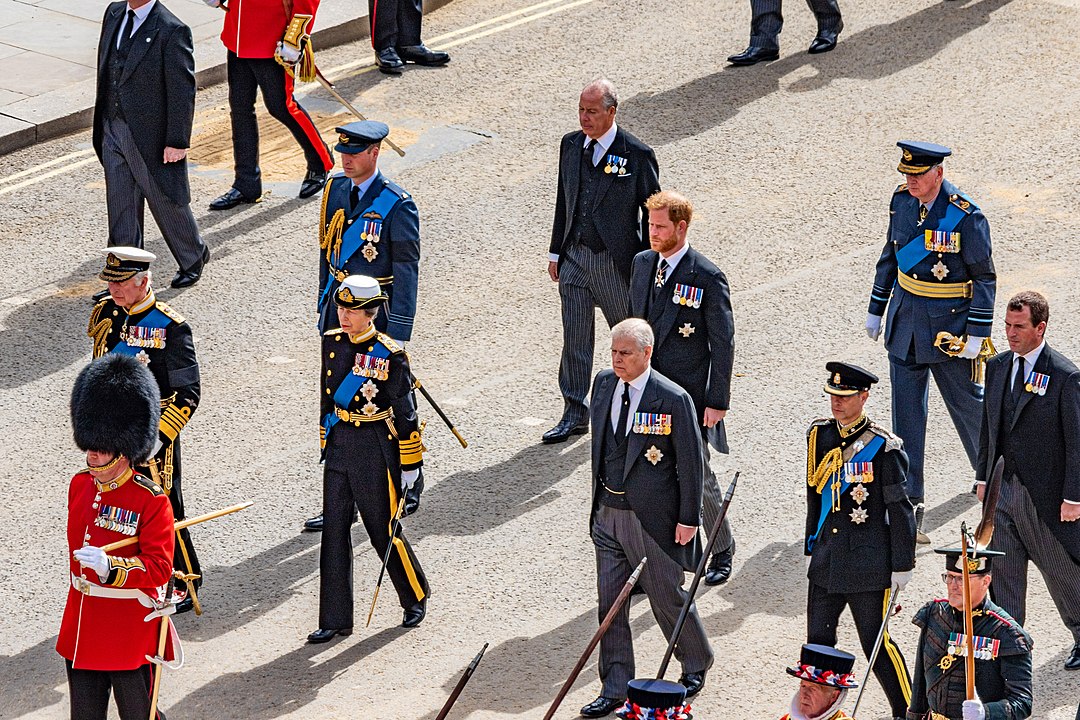
Following the death of Queen Elizabeth on September 8th, 2022, the United Kingdom will crown a new monarch, Charles III, for the first time in seven decades. How does the British line of succession look like after the Queen of the Century? And how did the House of Windsor come to the throne in the first place?
The birth of the House of Windsor
Queen Victoria had married off her eldest grandson and heir to the throne, George, to Maria von Teck (Mary of Teck), a German duke’s daughter and former fiancée of George’s older, deceased brother. This marriage was surprisingly happy, both were very fond of each other throughout their lives, and there were no extramarital affairs.
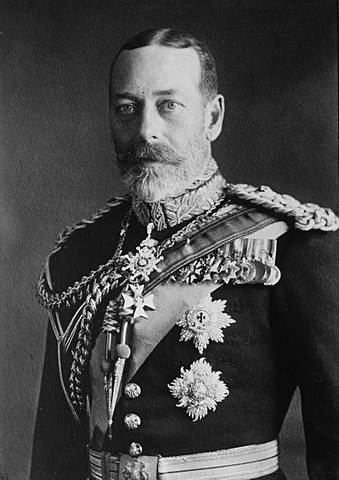
The couple had five sons and a daughter, aka. the British line of succession was secure. But George was certainly no joy as a father. He once said that his father was afraid of his grandmother, he himself was afraid of his father, therefore his children should now be afraid of him.
George and Mary lived quietly and in seclusion. George had none of his father’s bon vivant ways and devoted himself to stamp collecting rather than lavish parties. When Edward VII became king in 1901, however, he wanted to prepare his heir to the throne better than Queen Victoria had done with him. George became involved in affairs of state and was active in the military. Finally, in 1910, Edward VII died and George V assumed the crown.
Four years later, World War I broke out, and the Germans’ popularity ratings plummeted in Britain. The royal family suffered from it as well. H.G. Wells, author of “War of the Worlds,” described the king in a newspaper article as uninspiring and foreign. When George V heard of this, he rumbled, “I may be uninspiring, but I am certainly not foreign.”
In response to anti-German sentiment, George V changed the name of his family of Saxe-Coburg and Gotha to Windsor. The related von Battenberg family also anglicized their name to Mountbatten.
George V and his wife had five sons, four of whom reached adulthood. The eldest son, Edward, was a typical Prince Charming: Good-looking and traveling the world on official business as Prince of Wales, he became the most photographed person of his time. But the facade was deceptive, for neither was Edward very attached to his family and the throne, nor was he willing to put his own desires and needs behind his duties. By the way, he was also a racist and an anti-Semite. No wonder, then, that one of his many mistresses became the American Wallis Simpson, who was close to both the German and English Nazis.
George V saw this affair and the conduct of his eldest son with concern. He was very fond of his granddaughter Elizabeth, the daughter of his second eldest son Albert, and told a courtier for that reason that he hoped Edward would not have children and leave the path to the throne clear for Albert and Elizabeth.
Moreover, George predicted that Edward would ruin himself within twelve months of his accession.
The year of the three kings
George V died on January 20, 1936, of a bronchial condition that his chain-smoking certainly did not improve. Edward VIII was now king and still with Wallis Simpson, whom he wished to marry. There were several problems with this, however, even apart from their Nazi connections: Wallis Simpson had been divorced twice, and her ex-husbands were both still alive. The Anglican Church forbade divorcees with living exes to remarry, and Edward, as king, was after all head of the Church.
The Church and the Cabinet were against the marriage, so Edward’s only options were to renounce the marriage, marry despite all opposition, and thus plunge the government and the country into a constitutional crisis, or abdicate. He chose the latter and signed his document of abdication on December 10th, 1936 – less than 11 months after his father’s death.
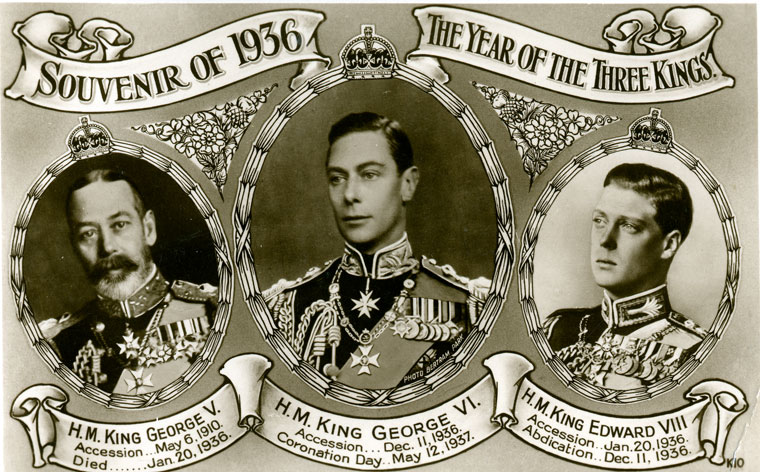
Thus, his younger brother Albert became King George VI. The latter was truly not happy about the course of his destiny. He stuttered and therefore had great problems with public appearances. However, he, his wife Elizabeth (the later “Queen Mum”) and their daughters Elizabeth and Margaret offered exactly the ideal image of a royal family that the British public needed when the Second World War broke out.
George always strove to keep morale high among the troops and the people, and his family supported him. Several times it was advised that the princesses should be taken out of the country to safety. But Queen Elizabeth responded, “My daughters will not go without me, I will not go without the king, and the king will never go.” Even when German aerial bombs damaged Buckingham Palace, the royal family stayed.
Among the people, this won many sympathies. And when London enthusiastically celebrated the end of the war, it clamored for the king to step out onto the balcony of Buckingham Palace and be cheered. His daughters Elizabeth and Margaret, meanwhile, plunged into the fray incognito. Accompanied only by a lady-in-waiting, they danced conga with the London crowd.
The Record Queen
German hostility toward the royal family had ended, but hatred against Germans in general was still strong. Now, however, Princess Elizabeth had already lost her heart to a certain Prince Philip of Greece and Denmark from the German noble house of Glücksburg in 1939. Both had a lively correspondence during the war and now, in 1946, Philip asked the king for the hand of his heiress. The latter agreed, although the official announcement of the engagement did not take place until 1947, after Elizabeth’s 21st birthday.
Now this engagement was not met with complete enthusiasm. Philip was thought to be arrogant, not a gentleman, and would not be faithful to Elizabeth. His mother suffered from mental disorders. His ancestry was German, and his three sisters were married to Nazis. Even the future Queen Mum was not at all enthusiastic about her future son-in-law, whom she for a long time called “the Hun.”
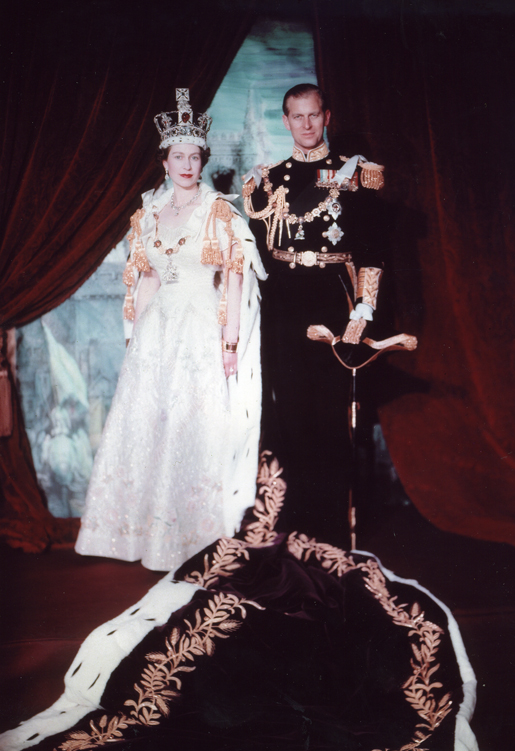
But Elizabeth was not dissuaded from her desire to marry. Philip became a British citizen, took the name Mountbatten, converted to the Anglican Church and was elevated to Duke of Edinburgh on the morning of his wedding. Now that he could hardly become more English, Philip and Elizabeth married on Nov. 20th, 1947.
The couple was granted a few more years in (relative) peace. They had their first two children, Charles and Anne, and temporarily lived in Malta. But from 1951, the king’s health went downhill. And Elizabeth had to stand in for her father at public appearances more and more often.
At the beginning of 1952, Philip and she went on a trip, the first stop of which was Kenya. But on February 6th, news reached her that her father had died and that she was now queen.
That day marked the beginning of the longest reign in the history of the British monarchy. Elizabeth II passed George III and Victoria and reigned until her death on September 8th, 2022.
The British line of succession in the 21st Century
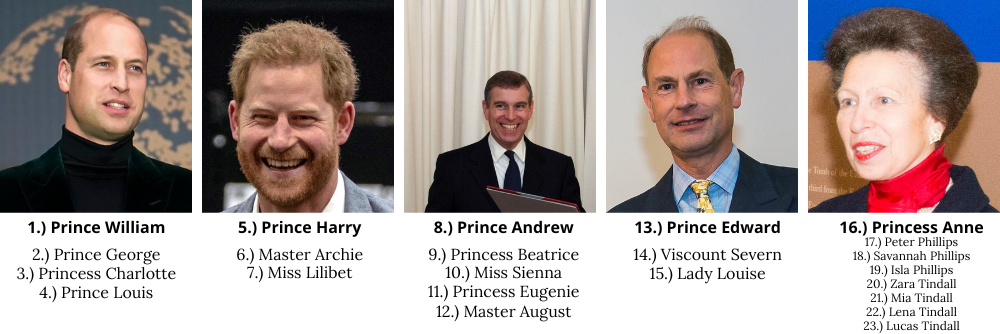
Unlike in previous centuries, there are plenty of heirs to the throne in the House of Windsor. Meanwhile, neither gender nor marriage to a Catholic is an obstacle on the way to the throne. Abdication or abdication of the throne is unusual in the United Kingdom. So the British line of succession looks like this:
Prince Charles, as expected, followed his mother to the throne as Charles III. After him comes his son William, followed by his children George, Charlotte and Louis. They are the first generation of heirs to the throne to inherit by age and not first by gender.
After that, things get a little more complicated. Because now two princes follow who are anything but uncontroversial, but are still officially in line to the throne.
In 5th place is Prince Harry, followed by his children Archie and Lilibet.
Next in line to inherit is the Queen’s next oldest son, Prince Andrew. Fortunately, whether that will ever happen is highly unlikely given Andrew’s offenses and also his position in line for the throne.
Andrew’s daughters Beatrice and Eugenie follow. Both of whom, with Sienna and August, already have children with places in the line of succession.
In the generation of the Queen’s children, the male right of succession still applies. So it is the sons who inherit first and not the second eldest child, Princess Anne. Therefore after Andrew and his children, Edward, the Queen’s youngest son, is next in line for the throne.
He is inherited by his children James and Louise, and here James also takes precedence over his elder sister. This is because the Succession to the Crown Act, which eliminates male primacy, only applies to heirs to the throne born after Oct. 28th 2011.
Only after that will the succession to the throne pass to Princess Anne. Then to her son Peter and his daughters Savannah and Isla, and then to Anne’s daughter Zara and her daughters Mia and Lena, as well as her son Lucas.
The British line of succession thus has a direct line of 23 heirs to the throne. The dynasty should be secure.
Pin for later:

